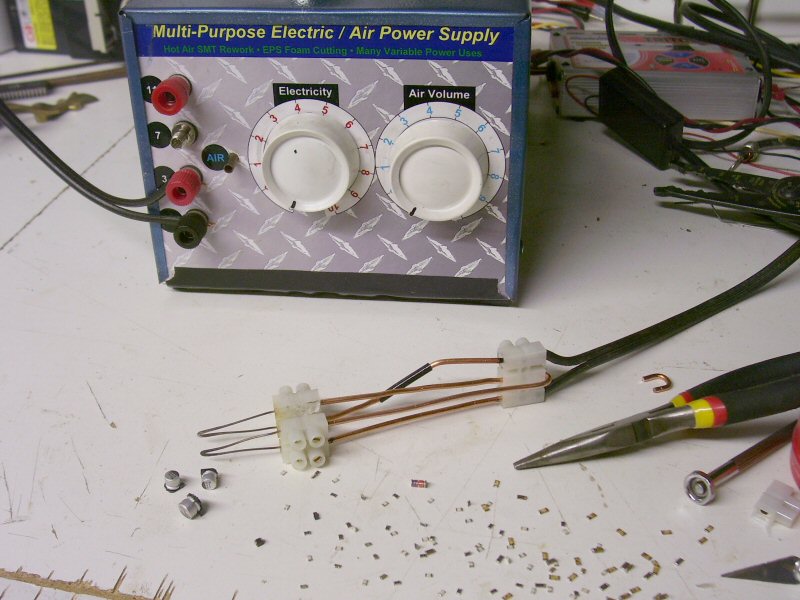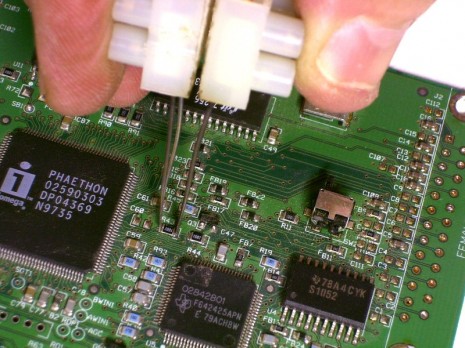Desoldering Tweezers
Here is a new desoldering tweezer tool I just made, it’s rough and there will be improvements, very likely. It looks kind of dangerous, but it’s really low voltage, under a volt, barely enough to register on my digital voltmeter.These tools cost hundreds of dollars if you want to buy them somewhere, but I made mine out of cheap radio shack parts and junk. The power supply is also homebuilt, which I also use for my hot air pencil . In the lower part of the photo, what looks like sawdust, is a bunch of resistors that I desoldered in just a few minutes.
Click on any of the pictures for a larger view.
This tool is a lot more precise than the hot air pencil, for removing resistors and other 2-lead surface mount devices. I was even able to remove a 3-lead smt transistor, it was a bit tricky. The hot air pencil is still superior for desoldering chips, but for resistors, capacitors and other 2-lead devices, the tweezers is about 10 times faster and puts less thermal stress on the board.
Here’s a closeup of the tweezers in action. You can see how incredibly tiny the surface mount resistors are. Click on any of the pictures for a larger view.The numbers are almost unreadable, but represent the same thing that the color coded resistors show. The first two or three digits are value, and the last digit is a multiplier. The blue resistors are higher precision, I think.
The heating elements in the tweezers are made of .030 stainless steel MIG welding wire, solid core. To make these, I used the following “blacksmithing” thechniques: I doubled over the wire into a sharp “V” shape, then heated red hot with propane torch to anneal, and then pounded flat with hammer and anvil. The idea with flattening was to make the “tweezer” jaw shape, and to increase the electrical resistance so that the heat is more at the tip than higher up. I also sanded the flat part to help make it thinner, for even more resistance, more heat at the tip where the heat needs to be.
The rest of the tweezers is made from scraps of #12 copper wire and “European-Style Barrier Strip” from Radio Shack, part number 274-680. The strip was hanging on my pegboard unused, still in the package for a few years, and cost only $2.59 according to the price sticker still on it. I sawed it into smaller sections to make the framework, so basically I consider this tool to be made from “junk” with really negligible cost, while the commercially available ones cost in the hundreds.
And, because I use it with my hot-air pencil power supply, I can adjust the heat! Some surface mount devices share a pad with a ground plane, which really soaks up a lot of heat, so I just crank up the power and even the most stubborn devices just “fall off in my hands.”
The only thing I can think of to improve this tool is operator comfort. The tool gets hot, no doubt about it. I will probably use a wooden dowel sawn in half lengthwise for the handle, something like the “new improved” version of the hot air pencil (scroll all the way to the bottom).
And finally, a YouTube video of the desoldering tweezers in action. Please forgive my mumbling.

